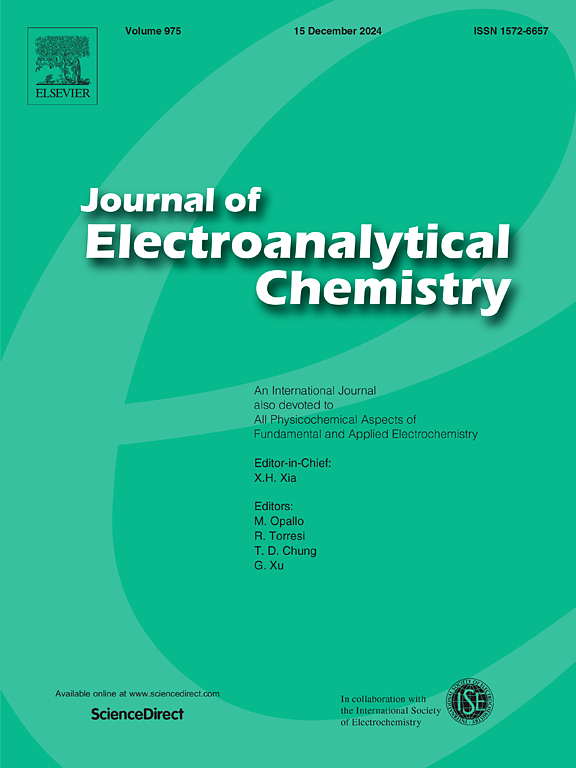MoS2 nanosheets decorated MoO2 on carbon electrode with electron-abundant reinforcement effect for boosting electrocatalytic hydrogen production
IF 4.1
3区 化学
Q1 CHEMISTRY, ANALYTICAL
引用次数: 0
Abstract
Advancing electrocatalytic hydrogen evolution technologies critically depends on the development of inexpensive, high-performance electrocatalysts. Although molybdenum dioxide (MoO2) and molybdenum disulfide (MoS2) are regarded as promising non-precious metal electrocatalysts, their limited catalytic activity and low electrical conductivity hinder their broader application in electrocatalytic water splitting. In this work, a high-performance electrode, MoS2-decorated MoO2 grown on carbonized wood (MoS2-MoO2/CW), was fabricated through a combined hydrothermal and chemical vapor phase deposition (CVD) strategy. The synergistic formation of the heterostructure between MoS2 and MoO2 endows the electrode with superior performance compared to individual catalysts, thereby significantly accelerating the hydrogen evolution efficiency. Specifically, XPS analysis reveals that the coupling of MoS2 and MoO2 facilitates rapid electron transfer on the electrode surface. This not only accelerates the escape rate of H2 but also enhances the catalytic activity for the hydrogen evolution reaction (HER). As a result, the well-designed electrode exhibies a low overpotential (106 mV) to drive 10 mA cm−2, high double-layer capacitance, and excellent long-term stability of 100 h at a constant current density. The results offer useful guidelines for the development and fabrication of transition metal-based composite HER electrocatalysts.

求助全文
约1分钟内获得全文
求助全文
来源期刊
CiteScore
7.80
自引率
6.70%
发文量
912
审稿时长
2.4 months
期刊介绍:
The Journal of Electroanalytical Chemistry is the foremost international journal devoted to the interdisciplinary subject of electrochemistry in all its aspects, theoretical as well as applied.
Electrochemistry is a wide ranging area that is in a state of continuous evolution. Rather than compiling a long list of topics covered by the Journal, the editors would like to draw particular attention to the key issues of novelty, topicality and quality. Papers should present new and interesting electrochemical science in a way that is accessible to the reader. The presentation and discussion should be at a level that is consistent with the international status of the Journal. Reports describing the application of well-established techniques to problems that are essentially technical will not be accepted. Similarly, papers that report observations but fail to provide adequate interpretation will be rejected by the Editors. Papers dealing with technical electrochemistry should be submitted to other specialist journals unless the authors can show that their work provides substantially new insights into electrochemical processes.

 求助内容:
求助内容: 应助结果提醒方式:
应助结果提醒方式:


